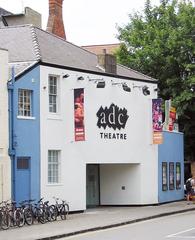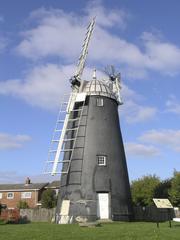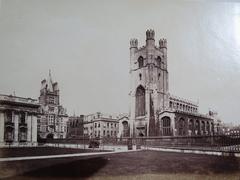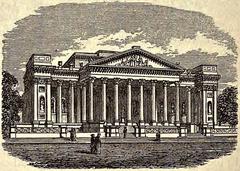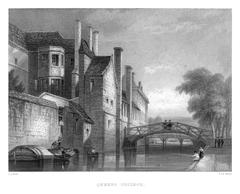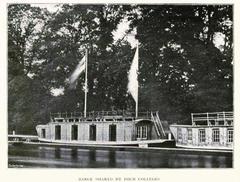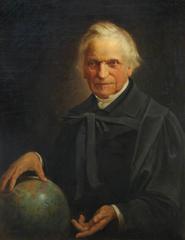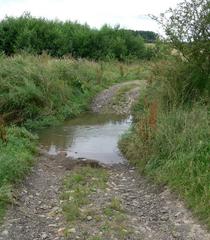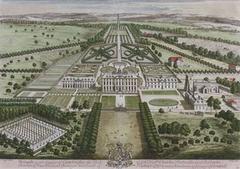St Giles War Memorial, Cambridge: Comprehensive Visiting Guide, History, and Cultural Significance
Date: 14/06/2025
Introduction
Located in the historic heart of Cambridge, United Kingdom, the St Giles’ War Memorial stands as a poignant tribute to local men and women who served and sacrificed their lives in the First and Second World Wars, as well as in later conflicts. Adjacent to the venerable St Giles’ Church—whose roots trace back to 1092—this memorial is a significant landmark for visitors interested in Cambridge’s rich historical and cultural fabric. This detailed guide provides essential information on the memorial’s history, architecture, visiting hours, accessibility, and nearby attractions, ensuring a meaningful and informed visit.
Drawing on authoritative sources such as Cambridge City Council, Historic England, and the St Giles’ Church official website, this article covers everything from practical visitor information to historical and architectural insights.
Table of Contents
- Brief History of St Giles’ Parish and Church
- The St Giles War Memorial: Honouring Local Heroes
- Architectural Design and Symbolism
- Commemorative Practices and Community Engagement
- Visiting Hours, Tickets, and Accessibility
- Access and Directions
- Nearby Attractions and Photographic Opportunities
- Conservation and Community Involvement
- Visitor Experience, Etiquette, and Tips
- Frequently Asked Questions (FAQ)
- Visuals and Interactive Media
- References and Further Reading
Brief History of St Giles’ Parish and Church
Founded in 1092 by Picot, the Norman Sheriff of Cambridge, and his wife Hugolina, St Giles’ parish is among the city’s oldest. The original church was built as a gesture of gratitude for Hugolina’s recovery from illness. After the medieval structure’s demolition in 1870, the current St Giles’ Church was constructed in 1874–75 in the Early French Gothic style, standing on Castle Street near the original site. The church’s west wall features a historic clock previously housed at King’s College Chapel (Capturing Cambridge).
The St Giles War Memorial: Honouring Local Heroes
Erected in 1920 and designed by Bodley and Hare, the St Giles’ War Memorial commemorates the 74 parishioners who died in the First World War, with additional plaques for those lost in the Second World War (Roll of Honour). Located at the junction of Castle Street and Chesterton Lane within the churchyard, it has served as a focal point for remembrance since its unveiling, which drew a large crowd and dignitaries including Major-General Sir G. W. Hare and the Bishop of Ely. Annual ceremonies on Remembrance Sunday and Armistice Day continue to reinforce its significance in the life of the community (Cambridge City Council).
Architectural Design and Symbolism
The memorial features a 15-foot-high Portland stone crucifix with a bronze figure of Christ, inscribed with “INRI” and “PAX” as symbols of sacrifice and peace (Historic England). Three bronze plaques bear the names of the fallen, reflecting the Arts and Crafts movement’s influence on commemorative art of the period. Decorative elements such as laurel wreaths, regimental badges, and Christian motifs emphasize remembrance, victory, and hope. The Grade II listing protects its architectural and historical integrity.
Commemorative Practices and Community Engagement
Remembrance events at the memorial attract civic leaders, armed forces, veterans, and local residents, with ceremonies including wreath-laying, prayers, readings, and a two-minute silence at 11:00 am (Cambridge City Council). Inclusive commemorations now recognize Commonwealth service members, reflecting Cambridge’s diverse population. St Giles’ Church also hosts guided tours, concerts, and community events, fostering cultural exchange and education (St Giles’ Church; Wikipedia).
Visiting Hours, Tickets, and Accessibility
- Memorial Access: The St Giles’ War Memorial is outdoors and accessible daily from dawn to dusk.
- Church Opening Hours: Typically open 9:00 AM–5:00 PM; check the church website for seasonal variations or special events.
- Admission: Free for both memorial and churchyard visits; donations are welcomed to support maintenance.
- Accessibility: The memorial is wheelchair accessible via the main entrance on Castle Street. Assistance dogs are welcome. For extra support, contact the church in advance.
- Guided Tours: Offered by arrangement and during Remembrance events; schedules are available on the church’s website.
Access and Directions
St Giles’ War Memorial is centrally located in Cambridge, easily reached on foot, by bicycle, or via public transportation. The site is about a 30-minute walk from Cambridge railway station or a short bus/taxi ride. Bus routes stop near Castle Street and Chesterton Lane. Car parking is limited nearby, so visitors are encouraged to use Park & Ride facilities or public car parks such as Castle Hill (St Giles’ Church Guide, p. 5).
Nearby Attractions and Photographic Opportunities
- St Giles’ Church: Adjacent to the memorial, with Norman origins and rich parish records.
- Castle Mound: Offers panoramic city views, located within walking distance.
- Museum of Cambridge: Explores local history and culture.
- River Cam and Cambridge Colleges: Iconic sites for extended exploration.
The memorial’s architectural details, combined with the churchyard’s tranquil ambiance, provide excellent opportunities for respectful photography.
Conservation and Community Involvement
Preservation of the memorial and churchyard is a joint effort between local authorities, church volunteers, and heritage organizations. Regular maintenance, cleaning, and restoration are managed by specialist firms like Hermitage Memorials (Hermitage Memorials), supported by public donations and grants. Community involvement is strong, with local schools and veterans’ groups participating in maintenance and remembrance activities (War Memorials Trust).
Visitor Experience, Etiquette, and Tips
- Respect: Maintain a quiet and respectful demeanor, especially during ceremonies.
- Photography: Permitted, but avoid disrupting services or private moments.
- Plan Ahead: Check the St Giles’ Church website for current hours and events.
- Accessibility: Paths are mainly level, though some uneven areas exist due to historic gravestones.
- Research: For family historians, parish registers and biographies are available online and at the church (FamilySearch; St Giles’ Church).
Frequently Asked Questions (FAQ)
Q: What are the visiting hours for St Giles’ War Memorial?
A: The memorial is accessible daily, dawn to dusk; the church is open 9:00 AM–5:00 PM.
Q: Is there an entrance fee?
A: No, admission is free.
Q: Is the site wheelchair accessible?
A: Yes, via the main entrance on Castle Street.
Q: Are guided tours available?
A: Yes, by arrangement and during special events—check the church’s website.
Q: Can I research the individuals commemorated?
A: Yes, detailed information and biographies are available online and inside the church.
Q: Are there nearby sites to visit?
A: Yes—Castle Mound, Museum of Cambridge, and Cambridge colleges are close by.
Visuals and Interactive Media
High-resolution images and virtual tours of the memorial and church are available on official heritage platforms (Capturing Cambridge). Alt text is used for accessibility and SEO optimization, such as “St Giles War Memorial Portland stone crucifix in Cambridge.”
References and Further Reading
- Capturing Cambridge: St Giles Church and War Memorial
- FamilySearch: Cambridge St Giles, Cambridgeshire, England Genealogy
- Cambridge City Council: Remembrance Events
- St Giles’ Church Guide (PDF)
- Historic England: War Memorials
- Roll of Honour: Cambridge St Giles War Memorial
- St Giles’ Church: Remembering the Great War
- Friends of St Giles’ Church: History
- Hermitage Memorials: Conservation Services
- War Memorials Trust: Cambridgeshire War Memorials
Conclusion
St Giles’ War Memorial stands as a powerful symbol of remembrance, community, and resilience in Cambridge. Its historical and architectural significance, coupled with ongoing commemorative and educational activities, make it a must-visit site for anyone interested in local heritage. The memorial’s open accessibility, central location, and proximity to other historical attractions ensure a rewarding visit for all.
For the latest information, guided tours, and event updates, visit the St Giles’ Church website and consider downloading the Audiala mobile app for interactive guides and personalized itineraries. Explore, remember, and connect with Cambridge’s enduring legacy at St Giles’ War Memorial.
